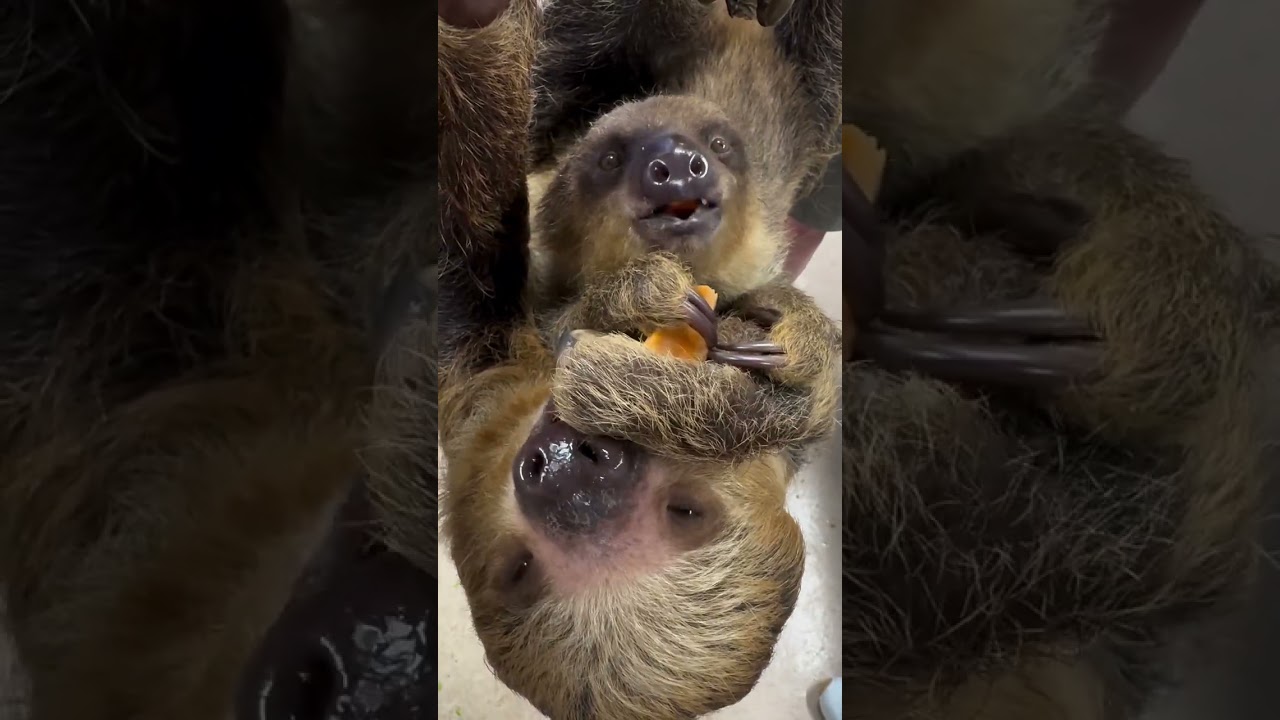- Introduction to the dietary preferences of two-toed sloths with a focus on how sweet potatoes play a role.
- Exploration of the natural habitat and behavioral characteristics of two-toed sloths.
- The significance of zoo management and care practices in the well-being of sloths.
- The role of sloths in biodiversity and ecosystem health.
- The importance of wildlife conservation efforts in protecting sloth populations.
The captivating image of Fiona and Scout indulging in sweet potato goodness offers a fascinating glimpse into the dietary habits of two-toed sloths. These intriguing mammals, native to the rainforest canopies of Central and South America, possess unique adaptations that allow them to thrive in their arboreal environments. Their diet is primarily composed of leaves, twigs, and fruits, yet the opportunity to enjoy sweet potatoes in a zoo setting adds a delightful aspect to their dietary regimen. This carbohydrate-rich vegetable offers a nutritious treat that supplements their regular intake, providing essential nutrients that support their slow metabolism.
In the wild, two-toed sloths inhabit the dense forests of Central and South America, where they have evolved to navigate the trees with remarkable agility. These gentle creatures are highly adept at moving through the canopy using their long limbs and curved claws. Their slow movements are strategic, helping them avoid detection by predators. Their behavioral patterns are heavily influenced by their need to conserve energy, as their diet is not particularly high in calories. Sloths are primarily nocturnal, spending most of the day resting in the tree tops.
Zoo management plays a crucial role in ensuring that sloths like Fiona and Scout live healthy and fulfilling lives in captivity. Providing a well-balanced diet is just one aspect of their care. Enclosures must mimic the natural habitats of sloths, offering plenty of vertical space for climbing and areas where they can retreat for privacy. Enrichment activities are essential to stimulate their natural instincts, and careful monitoring of their health is necessary to prevent issues related to their sedentary lifestyle. Zoos also provide a platform for public education about sloths, highlighting the importance of conservation efforts.
Sloths play a significant role in maintaining healthy ecosystems. As they move through the trees, they inadvertently aid in the dispersion of seeds, promoting forest regeneration. Their presence in an ecosystem is an indicator of biodiversity, as they coexist with many other species. By cultivating a rich, biodiverse environment, sloths contribute to the health of the forest and the planet. This interconnectedness emphasizes the importance of protecting sloth habitats to safeguard biodiversity.
The protection of sloths falls within broader wildlife conservation efforts. Habitat destruction, driven by deforestation and human encroachment, poses a significant threat to sloth populations. Conservation organizations focus on preserving the natural habitats of these creatures by promoting sustainable practices and reforestation projects. Efforts also involve scientific research to better understand the ecology and life cycles of two-toed sloths, ensuring that conservation strategies are effective and informed by solid data. By protecting sloths, we also protect countless other species that share their habitat.
Utilizing captivating videos and educational content, zoos and conservationists aim to raise awareness about the vital role sloths play in our ecosystems. The sight of two-toed sloths like Fiona and Scout indulging in treats such as sweet potatoes captivates audiences and highlights the importance of dietary enrichment and care in captivity. As we continue to learn more about these fascinating animals, it is vital to reflect on the broader implications of their survival, as their well-being is tied to the health of our planet.
*****
Source Description
Did you know? These omnivorous cuties digest food SO slow, that some food items can take an entire month to fully digest!


